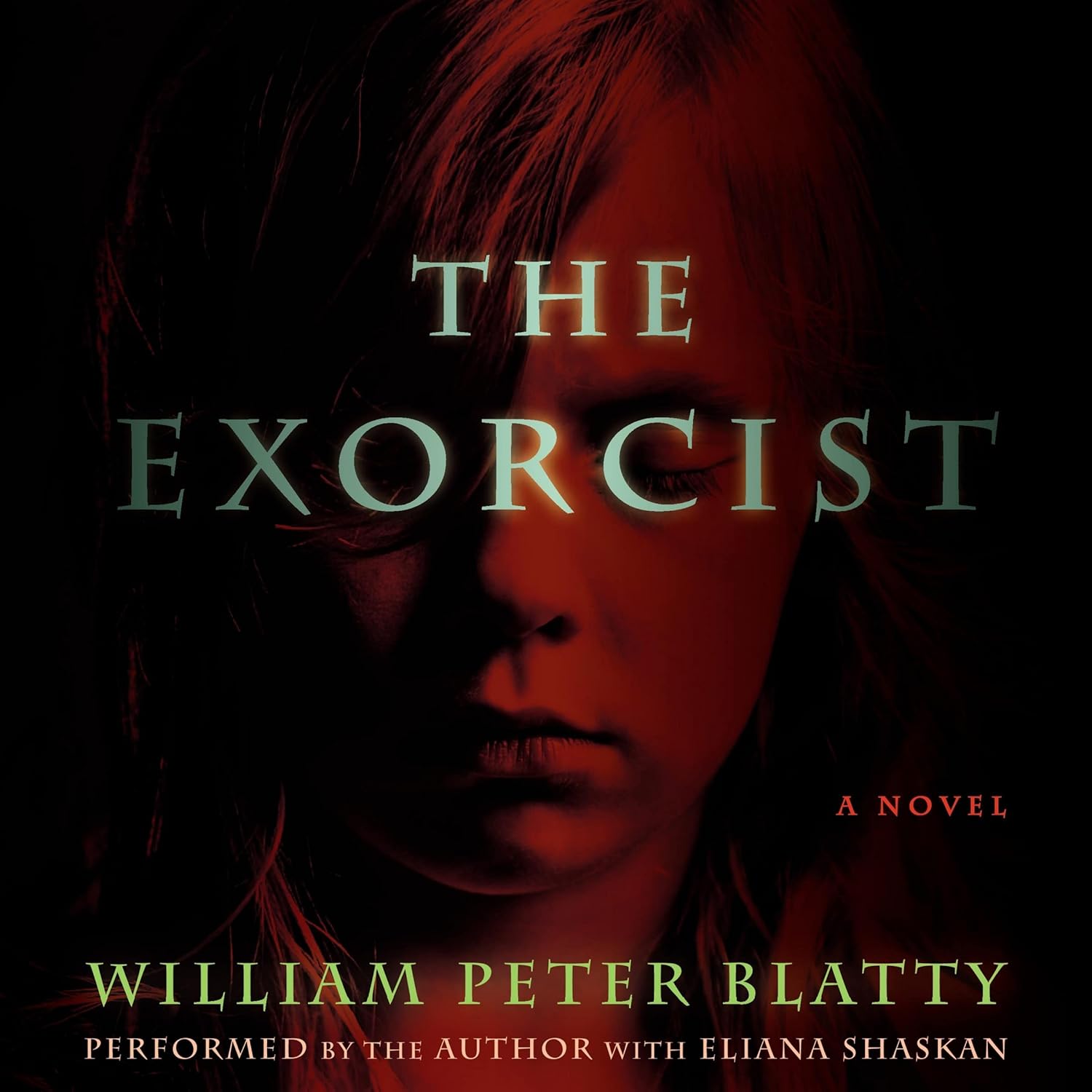Pathbreakers of Arab America—William Peter Blatty

By: John Mason / Arab America Contributing Writer
This is the sixty-ninth of Arab America’s series on American pathbreakers of Arab descent. The series includes personalities from entertainment, business, sports, science, arts, academia, journalism, and politics, among other areas. Our sixty-ninth pathbreaker, William Peter Blatty, a Christian Lebanese Arab, was a writer, a film director, and a producer. Blatty is best known for his 1971 novel, “The Exorcist,” and his 1973 screenplay for the film adaptation of the same name. Blatty won an Academy Award for Best Adapted Screenplay for “The Exorcist” and was nominated for Best Picture as its producer. The film also earned him a Golden Globe Award for Best Motion Picture – Drama as producer. Blatty’s rise to stardom was exceptional given his humble beginnings, characterized as “comfortable destitution.” He died in 2017.
Famous Lebanese American novelist and filmmaker Blatty, began a hardscrabble life in New York City as one of five immigrant children
Blatty was born on January 7, 1928, in New York City, the fifth and youngest child of Lebanese immigrants. His mother, Mary Mouakkad, is described by Wikipedia’s series on Arab Americans as “a devout Melkite Catholic and the niece of bishop Germanos Mouakkad.” His father was Peter Blatty, who worked as a cloth cutter. Blatty’s parents separated when he was a toddler, leaving his mother, depicted as deeply religious, to raise the five children. He described his mother’s sole support came from “peddling homemade quince jelly in the streets of Manhattan.” He lived at 28 different addresses during his childhood because of nonpayment of rent. Blatty noted, “We never lived at the same address in New York for longer than two or three months at a time…[since] eviction was the order of the day.”
Blatty was an excellent student, having attended Brooklyn Preparatory, a Jesuit school, on a scholarship and graduated as class valedictorian in 1946. He subsequently attended Georgetown University on a scholarship, earning his bachelor’s degree in English in 1950. He later described his years at Georgetown as “probably the best years of my life,” …[since] until then, I’d never had a home.” While studying for his master’s degree at George Washington University, still financially insecure, Blatty took menial jobs, including door-to-door vacuum cleaner salesman, a beer truck driver, and a United Airlines ticket agent.
He earned a master’s in English literature and enlisted in the U.S. Air Force, serving in the Psychological Warfare Division. That latter work may just have given Blatty some material for his subsequent career as a writer of such dark matters as exorcism. After the Air Force, he joined the United States Information Agency as an editor based in Beirut, Lebanon.
Once back in the States, in the late 1950s, Blatty worked as a public relations director at Loyola University of Los Angeles and as a publicity director at the University of Southern California. He then published his first book, “Which Way to Mecca, Jack?” in 1960, a humorous look at his early life and his work at USIS in Lebanon. Wikipedia notes that that book reports on his successful masquerade as a Saudi Arabian prince when he got to Los Angeles. “In 1961, while still pretending to be a prince, Blatty appeared as a contestant on the Groucho Marx quiz show “You Bet Your Life,” winning $10,000 by fooling even Groucho and then having enough money to quit his job and write full-time. Thereafter, writing became his job.

After his first book, Blatty published the comic novels: “John Goldfarb, Please Come Home!”(1963), “I, Billy Shakespeare,” (1965), and “Twinkle, Twinkle, ‘Killer’ Kane,” (1966). These all garnered accolades even though sales did not match the success. He then began a collaboration with director Blake Edwards, writing scripts for comedy films including: “A Shot in the Dark,” (1964), “What Did You Do in the War, Daddy?,” (1966) “Gunn,” (1967), and “Darling Lili,” (1970), a musical starring Julie Andrews and Rock Hudson. His name does not always show up in these productions. Comedies for the big screen under his name include the Warren Beatty/Leslie Caron film “Promise Her Anything”, (1965) and “The Great Bank Robbery,” (1969). Many novels and screenplays followed too many to describe here.
In his personal life, Blatty married four times and had seven children. He lived with his last wife for many years in Hollywood and Aspen, ending up in Bethesda, Maryland, in 2000. Blatty died of multiple myeloma on January 12, 2017, at a hospital in Bethesda, five days after his 89th birthday, and was interred at Gate of Heaven Cemetery in Silver Spring, Maryland.
Blatty conjured a tale of demonic possession and gave millions the fright of their lives with the best-selling novel and Oscar-winning movie, “The Exorcist”
And then came “The Exorcist.” In it, Blatty tells the story of a twelve-year-old girl possessed by a powerful demon. It topped The New York Times Best Seller list for 17 weeks, where it remained for 57 consecutive weeks. The book sold over 13 million copies in the U.S. alone and was translated into over a dozen languages. He later adapted it with director William Friedkin into the film version. Blatty then won an Academy Award for his Exorcist screenplay and Golden Globes for Best Picture and Best Writing. It became the first horror film to be nominated for an Oscar.
“The Exorcist “details the demonic possession of eleven-year-old Regan MacNeil, the daughter of a famous actress, and the two priests who attempt to exorcise the demon. The novel resulted in the film, whose screenplay was also written and produced by Blatty, for which he won an Academy Award. The story was inspired by a 1949 case of supposed demonic possession and exorcism that Blatty heard about while he was a student in the class of 1950 at Georgetown University. As a result, the novel takes place in Washington, D.C., near the Georgetown campus. In September 2011, the story was reprinted by HarperCollins to celebrate its 40th anniversary.
The plot of “The Exorcist” is that an elderly Jesuit priest named Father Lankester Merrin is leading an archaeological dig in northern Iraq and is studying ancient relics. After discovering a small statue of the demon Pazuzu (an actual ancient Assyrian demon), a series of omens alerts him to a pending confrontation with a powerful evil, which, unknown to the reader at this point, he has battled before in an exorcism in Africa.

The plot continues. Meanwhile, in Georgetown, a young girl named Regan MacNeil is living with her famous mother as she begins to become inexplicably ill. After a gradual series of poltergeist-like disturbances, Regan rapidly undergoes disturbing psychological and physical changes. She contorts her body to bow and bend in impossible directions, at one point following around her tutor, Sharon, hissing and squirming like a snake. At the same time, there are disturbances at the local Holy Trinity Church, which has been desecrated on several recent occasions. Father Karras comes under suspicion, and a discovery is made of a man who has been killed with his head turned completely around.
Regan is given several unsuccessful psychiatric and medical treatments for her malady, but she becomes increasingly disturbed, and the doctors still cannot find a source. Father agrees to her psychiatric treatment, initially resisting the idea that it is an actual demonic possession. He points to advances in science that can explain what was previously assumed to be possession. Having exhausted all his skills, the priest then turns to the local bishop for permission to perform an exorcism on the child.
The bishop, however, does not believe Karras is qualified to perform the rites and appoints the experienced Merrin to perform the exorcism. The lengthy exorcism tests the priests both physically and spiritually. When Merrin, who had previously suffered cardiac arrhythmia, dies during the process, a continuation of the exorcism falls to Father Karras. When he demands that the demonic spirit inhabit him instead of the innocent Regan, the demon seizes the opportunity to possess the priest. Karras heroically surrenders his own life in exchange for Regan’s by jumping out of her bedroom window, dying and only recapturing his faith in God as his last rites are read.
National Public Radio reported on Blatty’s death, noting, “Even those who thought they had seen everything had never seen anything like the R-rated “The Exorcist” and its assault of vomit, blood, rotting teeth, ghastly eyes and whirlwind head-spinning…Fans didn’t care that Vincent Canby of The New York Times found it a “chunk of elegant occultist claptrap,” or that the set burned down during production. They stood for hours in freezing weather for the winter release and kept coming even as the movie…cast its own disturbing spell.”
Blatty once said about his novel, “The Exorcist,” “…when I heard about this [exorcism] case and read the details, that seemed so compelling, I thought, ‘My God, if someone were to investigate this and authenticate it, what a tremendous boost to faith it would be.’ I thought, ‘Someday I would like to see that happen. You know, I would like to do it.'”
He did it, indeed!
Sources:
–“William Peter Blatty,” Wikipedia Series on Arab Americans, 2024
–“RIP William Peter Blatty, who wrote the great horror novel of our time, Stephen King tweeted Friday. ‘So long, Old Bill,'” quoted in an NPR program
John Mason, Ph.D., focuses on Arab culture, society, and history and is the author of LEFT-HANDED IN AN ISLAMIC WORLD: An Anthropologist’s Journey into the Middle East, New Academia Publishing, 2017. He has taught at the University of Libya, Benghazi, Rennselaer Polytechnic Institute in New York, and the American University in Cairo; John served with the United Nations in Tripoli, Libya, and consulted extensively on socioeconomic and political development for USAID and the World Bank in 65 countries.
The views and opinions expressed in this article are those of the author and do not necessarily reflect the position of Arab America. The reproduction of this article is permissible with proper credit to Arab America and the author.
Check out our Blog here!








